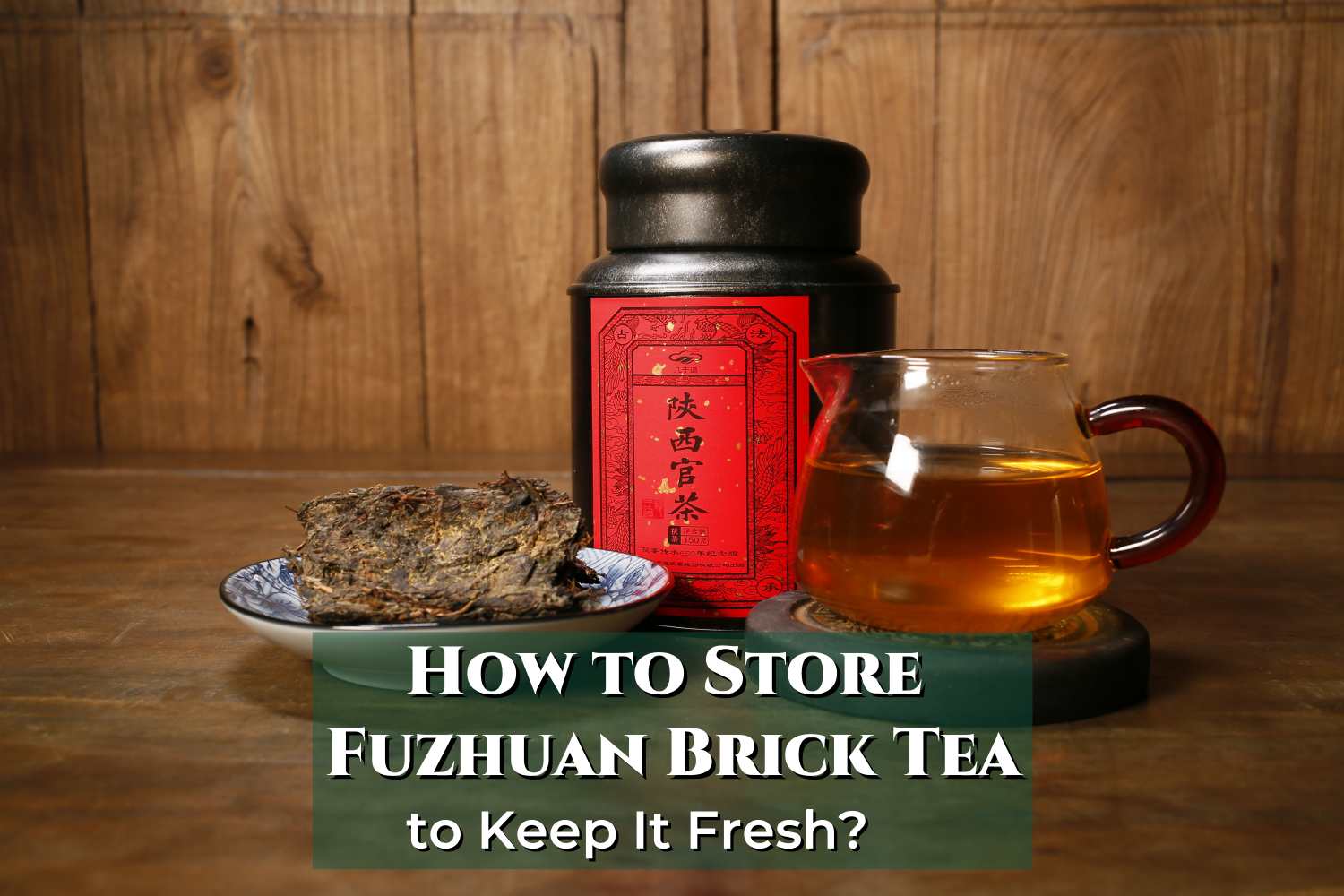Fuzhuan tea, also known as fuzhuan brick tea, is a unique and prized variety of dark tea tracing back to the Jingyang region of the Qinling Mountains. This fermented tea is renowned for its distinctive flavor profile and potential health benefits. However, to fully appreciate its qualities, proper storage is crucial. This comprehensive guide will delve into the intricacies of storing fuzhuan brick tea to maintain its freshness and flavor over time.
Comprehending Fuzhuan Brick Tea’s Characteristics
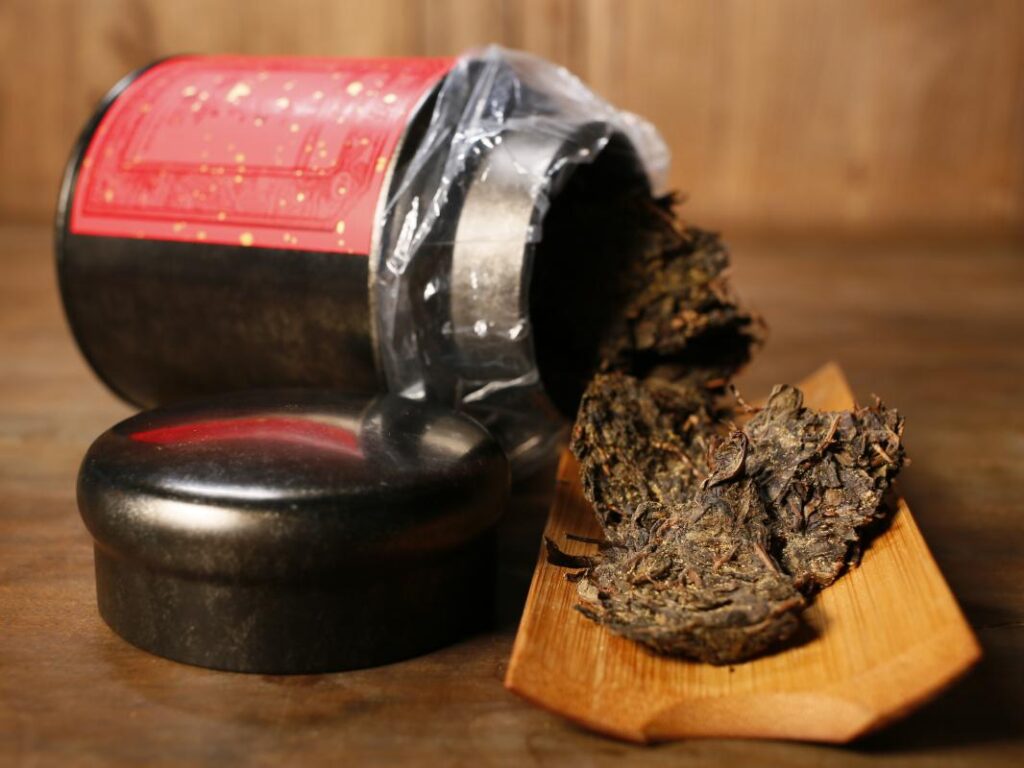
Before we explore storage methods, it’s essential to grasp the unique characteristics of fuzhuan tea. This dark tea undergoes a complex fermentation process, resulting in a compressed brick form. The tea leaves are inoculated with a beneficial fungus, Eurotium cristatum, contributing to its distinct flavor and appearance.
Fuzhuan brick tea is characterized by its dark color, earthy aroma, and smooth taste. The presence of “golden flowers” – the visible growth of Eurotium cristatum on the tea’s surface – is a hallmark of high-quality fuzhuan tea. These golden flowers are not only safe to consume but are actually prized for their potential health benefits.
The unique fermentation process and compressed form of fuzhuan brick tea make it relatively stable compared to other tea varieties. However, proper storage is crucial to preserve its quality and prevent deterioration.
Optimal Storage Conditions for Fuzhuan Brick Tea
| Aspect | Optimal Conditions |
|---|---|
| Temperature Control | Store at 20-25°C (68-77°F); avoid temperature fluctuations; consider a dedicated tea refrigerator if necessary. |
| Humidity Management | Maintain 50%-60% relative humidity; use silica gel packets or a hygrometer to manage and monitor humidity levels. |
| Light Protection | Store away from direct sunlight and strong artificial light; use opaque containers or dark storage areas. |
| Air Circulation | Allow some airflow to prevent stagnant air and odors; use shelves or racks for multiple bricks. |
To maintain the freshness and quality of your fuzhuan brick tea, consider the following storage guidelines:
Temperature Control
Temperature plays a vital role in preserving fuzhuan tea. Store your tea bricks in a cool environment at 20-25°C (68-77°F). Avoid exposing the tea to extreme temperature fluctuations, which can lead to condensation and potentially compromise the tea’s quality.
Consider using a dedicated tea refrigerator or a climate-controlled storage area to maintain consistent temperatures in regions with hot and humid climates. However, if using a refrigerator, ensure the tea is adequately sealed to prevent moisture absorption and odor contamination from other foods.
Humidity Management
Humidity is another crucial factor in fuzhuan brick tea storage. The ideal relative humidity for storing this tea ranges from 50% to 60%. Excessive humidity can promote unwanted mold growth, while arid conditions may cause the tea to lose flavor and aroma.
You can use silica gel packets or other moisture-absorbing materials in your storage containers to manage humidity levels. Alternatively, invest in a hygrometer to monitor humidity levels in your tea storage area and take appropriate measures to maintain the optimal range.
Light Protection
Fuzhuan brick tea should be stored away from direct sunlight and strong artificial light. Exposure to light can degrade the tea’s quality and alter its flavor profile. Opt for opaque containers or store the tea in a dark cupboard or pantry to shield it from light exposure.
Air Circulation
While it’s essential to protect fuzhuan tea from excessive air exposure, some degree of air circulation is beneficial. This helps prevent the accumulation of stagnant air and potential odors. If storing multiple tea bricks, consider placing them on a tea shelf or rack that allows for some airflow between the bricks.
Practical Storage Solutions for Fuzhuan Brick Tea
Now that we’ve covered the optimal storage conditions, let’s explore some practical storage solutions for your fuzhuan brick tea:
Traditional Clay Containers
Clay containers, particularly those made from Yixing clay, are excellent for storing fuzhuan brick tea. These porous containers allow subtle air exchange while protecting the tea from light and maintaining a stable internal environment. The natural properties of clay also help regulate humidity to some extent. When using clay containers, ensure they are unglazed inside for proper interaction between the clay and the tea. Before use, season the container by rinsing it with boiling water and allowing it to dry completely.
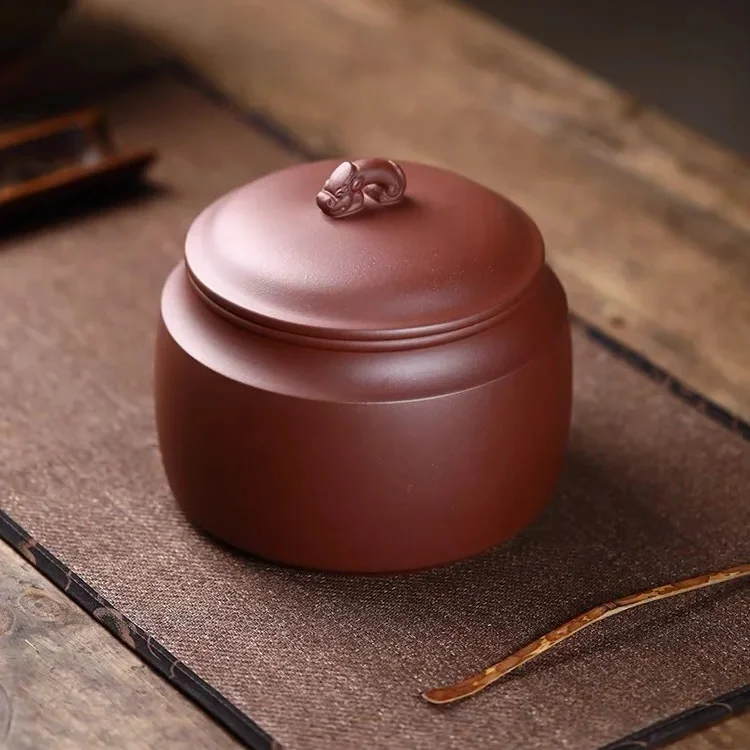
Ceramic Canisters
High-quality ceramic canisters with tight-fitting lids are another suitable option for storing fuzhuan brick tea. Ceramic is non-reactive and provides excellent protection from light and air. Choose canisters with a proper seal to maintain a controlled environment for your tea. Some ceramic canisters have additional features like double lids or built-in humidity regulation systems, which can be particularly beneficial for the long-term storage of fuzhuan tea.
Mylar Bags
Food-grade mylar bags can be an excellent choice for those looking for a more modern storage solution. These bags are impermeable to light, moisture, and odors, making them ideal for preserving the quality of fuzhuan brick tea. When using mylar bags, consider adding an oxygen absorber to remove residual air and create a more stable environment for the tea. Seal the bags carefully and store them in a cool, dark place for optimal results.
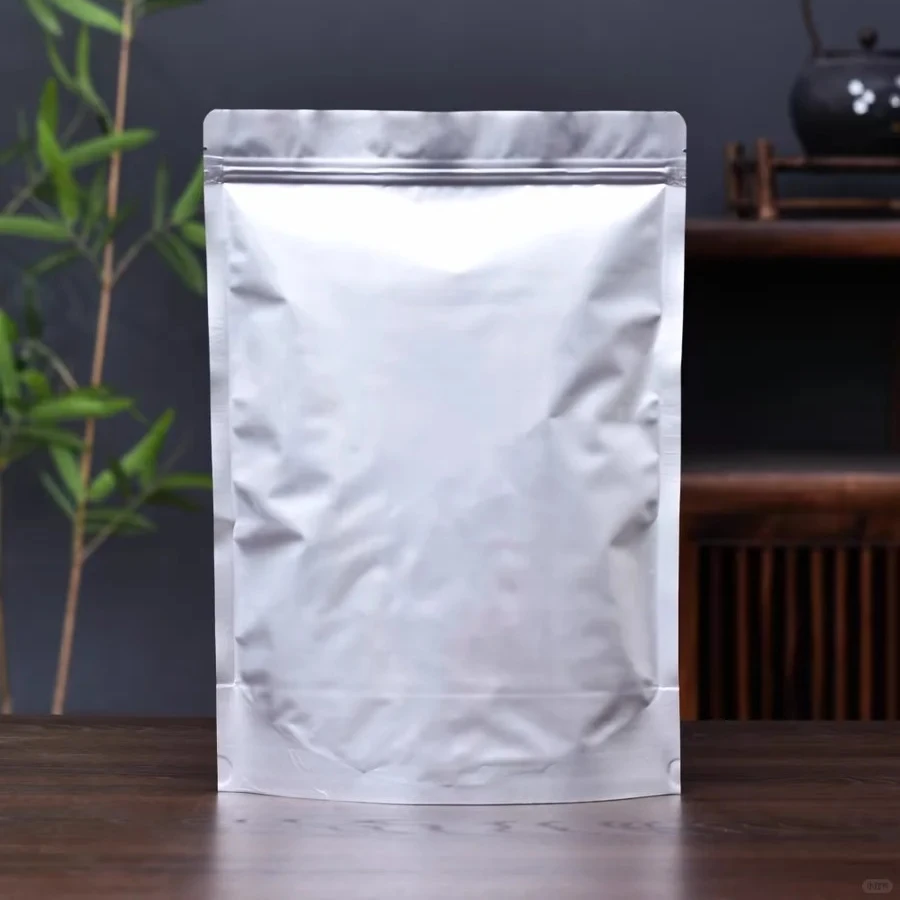
Wooden Boxes
Traditional wooden boxes, particularly those made from aromatic woods like camphor or cedar, can provide an interesting storage option for fuzhuan brick tea. The natural properties of these woods can help repel insects and regulate humidity to some extent. If opting for wooden storage, ensure the box is well-crafted with a tight-fitting lid to prevent excess air exposure. Line the box with acid-free paper or cloth to avoid direct contact between the wood and the tea, potentially affecting the tea’s flavor over time.
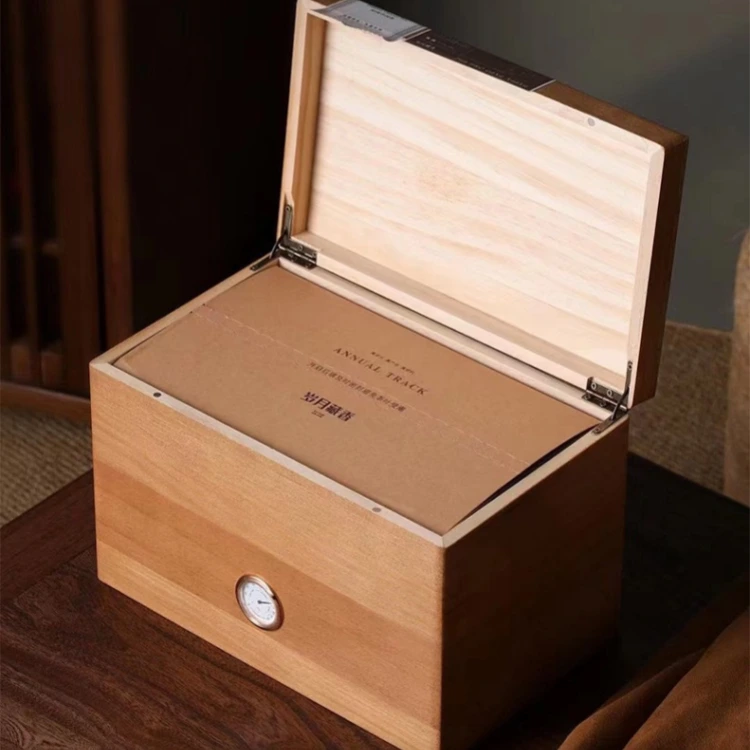
Vacuum-Sealed Packaging
For long-term storage or when dealing with large quantities of fuzhuan brick tea, vacuum-sealed packaging can be an effective solution. This method removes air from the package, creating an environment that slows oxidation and preserves the tea’s quality. When using vacuum-sealed bags, it’s crucial to ensure the tea is dehydrated before sealing to prevent any moisture-related issues. Once sealed, store the packages in a cool, dark place for the best results.
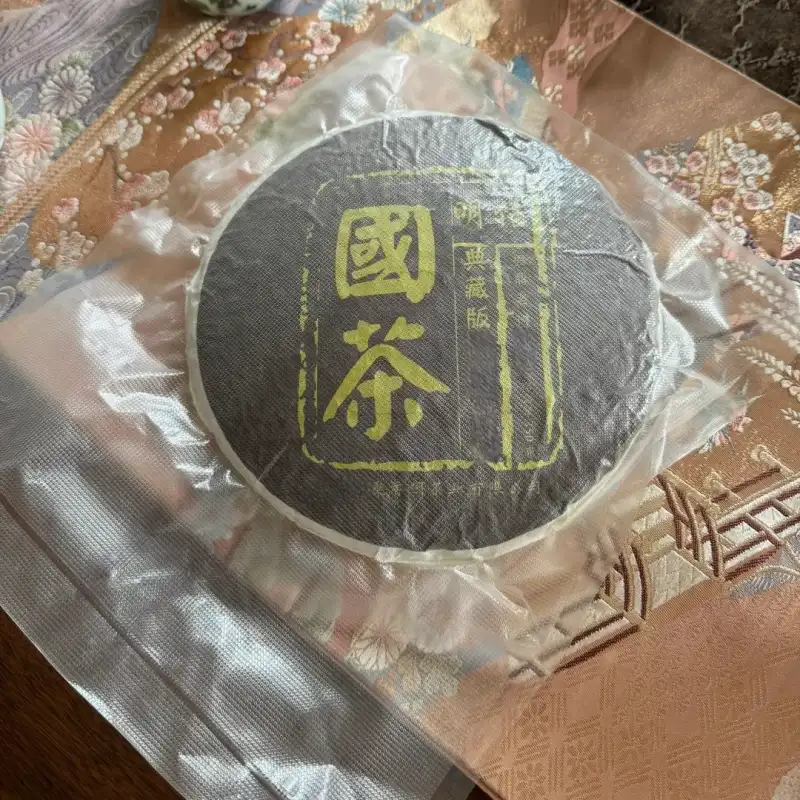
Conclusion
Proper storage is key to preserving the unique qualities of fuzhuan brick tea. By understanding the optimal conditions and implementing suitable storage solutions, you can ensure that your tea remains fresh, flavorful, and enjoyable for years. Whether you’re a seasoned tea connoisseur or a curious newcomer to fuzhuan tea, these storage practices will help you make the most of this remarkable beverage.
We serve thousands of satisfied tea enthusiasts in our tea house each year, and we’re excited to share these exceptional teas with tea lovers worldwide at Orientaleaf.com.

References
- Zhang, L., et al. (2013). “Characterization of the microbial community in different types of Daqu samples as revealed by 16S rRNA and 26S rRNA gene clone libraries.” World Journal of Microbiology and Biotechnology, 29(4), 693-703.
- Ling, T.J., et al. (2010). “New triterpenoid saponins from the roots of Camellia sinensis var. assamica.” Journal of Agricultural and Food Chemistry, 58(15), 8808-8813.
- Mo, H., et al. (2008). “Tea polyphenols and theaflavins inhibit the growth of human cancer cells in vitro.” Nutrition and Cancer, 60(6), 800-809.
- Lv, H.P., et al. (2013). “Chemical compositions of the golden flowers of Fuzhuan brick tea and their cholesterol-lowering properties.” Food Research International, 54(2), 1633-1640.
- Xu, Y., et al. (2015). “Antioxidant properties of different cultivars of Fuzhuan brick tea during storage.” Molecules, 20(6), 10641-10656.
